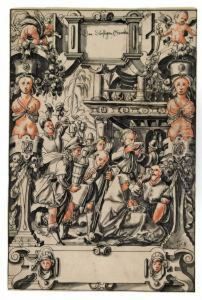Abraham Sybold Paintings
Abraham Sybold was a Dutch painter, born in 1785. Although not as widely recognized as some of his contemporaries, Sybold made significant contributions to the Dutch painting scene of the early 19th century. His works, primarily focused on landscapes and portraits, reflect the transition from the late 18th-century Rococo style towards the more emotionally charged and nature-focused Romanticism that characterized the early 1800s.
Sybold's education and early career are somewhat obscure, as detailed records of his training have not been widely documented. However, it is known that he was active in Amsterdam and possibly studied under some of the prominent Dutch artists of the late 18th century. Throughout his career, Sybold exhibited a keen interest in capturing the essence of his subjects, whether it was the serene beauty of the Dutch countryside or the intricate details of human expression in his portraits.
Despite facing competition from more renowned artists of his time, Sybold managed to carve out a niche for himself with his distinctive style. His landscapes often depicted the rural Netherlands with a tranquil and idyllic quality, while his portraits were noted for their depth of character and realism. Sybold's work was appreciated by a discerning clientele, and he received commissions from various Dutch patrons.
Abraham Sybold passed away in 1844, leaving behind a modest but impactful body of work. His paintings, though not as prolifically celebrated as those of his peers, contribute valuable insights into the Dutch artistic transition of the early 19th century. Today, Sybold's works are held in several Dutch museums and private collections, where they continue to be studied and admired for their contribution to the development of Dutch Romanticism.
